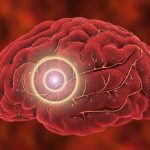
Dark patches or freckle-like spots on the face are melasma, and it’s possible both to prevent them and make them less noticeable, according to a skin expert. Dr. Rebecca Kazin, a Rockville, Md., dermatologist, offers some tips for dealing with these patches, which are caused by sun exposure, pregnancy, stress, certain medications and sometimes a medical condition. “While melasma may go away on its own, it can persist for years,” Kazin said in a news release from the American Academy of Dermatology. “Although melasma is not harmful, people often want to treat it.” A dermatologist can create an individualized treatment plan using different therapies to address each patient’s concerns, she said. Melanocytes, the cells that give skin its color, are more active in darker complexions, so melasma can be more noticeable with darker skin tones. Kazin and the American Academy of Dermatology recommend protecting the skin from the sun. Seek shade when outdoors. Wear sun-protective clothing, including a lightweight and long-sleeved shirt, pants, a wide-brimmed hat and sunglasses with UV protection. Choosing clothing with an ultraviolet protection factor (UPF) number on the label can offer even more protection. Use a broad-spectrum, water-resistant sunscreen with an SPF of 30 or higher on all skin not covered by clothing whenever you’re outdoors, even on cloudy days. Reapply sunscreen every two hours, more often if you have been… read on > read on >
























-300x200.jpg)













